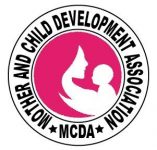Skip to content
Since the fall of the central government, more than three decades, life of people in Somalia has been threatened with lack of peace, increased risks of exploitation coupled with poor employment opportunities. Two-third of Somalia youth are unemployed one of the highest rates of joblessness in the world (UNDP, 2012), the worse impact has been on children who seem to be the soft targets of desperate money seekers.
The danger is that when institutions fail to respond to the needs of vulnerable people, marginalized families are gravitated towards violence as a means to an end. Many youths feel they are disempowered by multiple structural barriers built into the family, institutions, local government and society at large.
As a result of the war many were killed and the rest suffered from physical, emotional and psychological problems that increased the number of vulnerable handicapped youth in the region.
Poverty, lack of education and employment opportunities coupled with clan and cultural discrimination level of frustrations and discontents have risen among many youths in Somalia state of Somalia.
Although the northern parts of the country, especially Somalia and Somaliland are relatively stable, there is little or no public infrastructure and the education system just being redeemed having been entirely destroyed by the conflict. Privately run institutions have flourished during these times offering opportunities of higher education, but there a huge gap between those who can afford to go to school and those who cannot.

